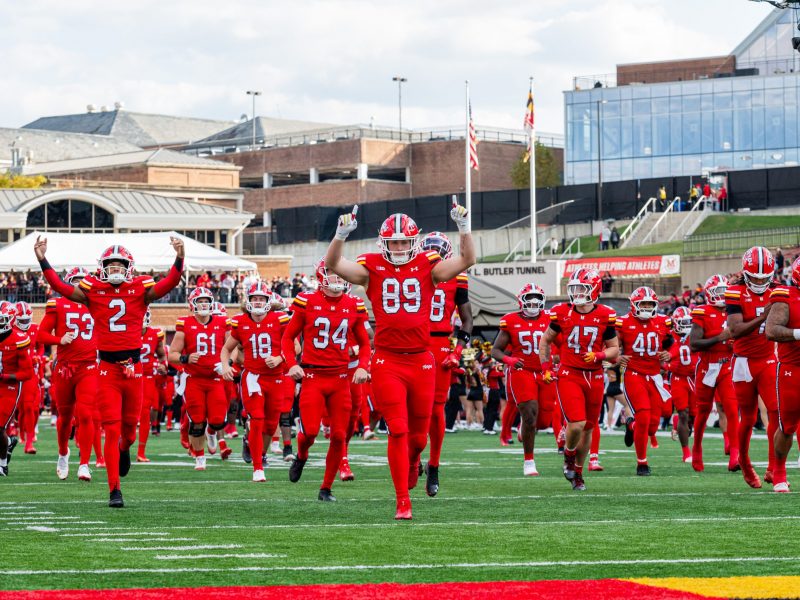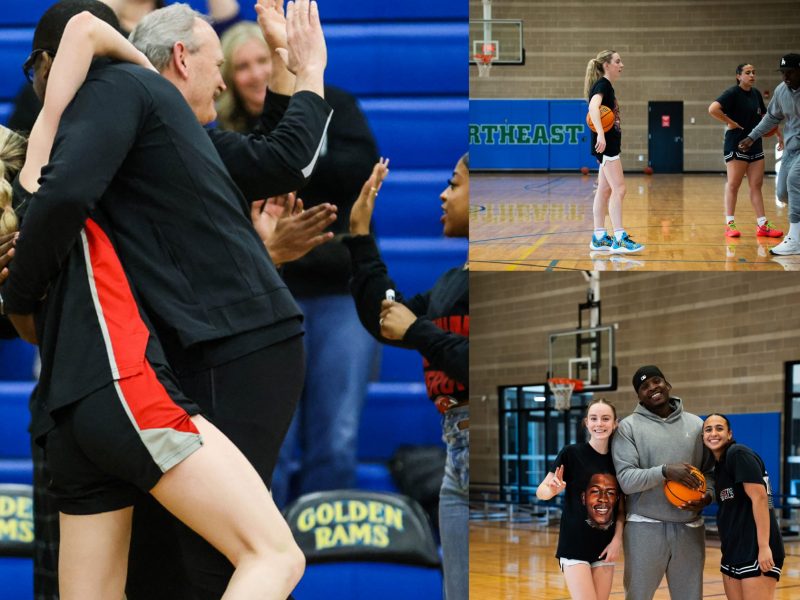The faceoff circle in men’s lacrosse is essentially a gladiator’s circle.
The ball is placed on the ground, with two hulking bodies wearing different jerseys lurking above, ready to collide at full strength. The combatants use every tactic at their disposal, from leverage and angles to brute strength, to pry the ball out of the heap and give their team the advantage.
“It’s the most tiring thing out there on the field,” Terrapin short stick Paul Andrews said. “When it’s a ground ball, it’s just a scrum. There’s a lot of hits and a lot of back-and-forth. It takes a physical toll on the body.”
The 5-foot-11-inch, 225-pound Andrews, a graduate student, along with junior midfielder Will Dalton and freshman short stick Bryn Holmes, have taken the majority of the Terps’ faceoffs this season. At 6 feet 5 inches and 245 pounds, Dalton is the primary specialist, while the 5-foot-7-inch, 165-pound Holmes is the Terps’ late-game go-to guy.
And while the three players offer the Terps a lot of variation in the faceoff circle, the Terps have struggled of late in winning the ball. Injuries to key short stick wingmen Jeff Reynolds and midfielder Jimmy Borell have left the Terps struggling to get to loose balls consistently and forced coach Dave Cottle to use two long pole wingmen, a strategy that potentially leaves the defense vulnerable.
The injuries have forced Holmes and Andrews into positions as the Terps’ top two short stick defenders as well as their roles on faceoffs, meaning Cottle cannot afford to wear down either by keeping them as wings for Dalton. Cottle has taken the injuries in stride and attempted to make the best with what he has.
“If we put Paul Andrews and Bryn Holmes out there, they’ll be tired by the first quarter. We have no one else to play,” Cottle said. “So we had to come up with this, and that’s where the sets of two poles came from.”
The changes have yet to prove effective. The Terps have won 48.4 percent of their faceoffs this season. But in the past three games, they have only won a lowly 38.5 percent of faceoffs.
Dalton in particular has slumped lately. In the two games since the Terps played Navy, a game he missed due to injury, Dalton has only won five of 16 faceoffs. The huge junior has worked with former Terp faceoff specialist David Tamberrino and studied film to improve, as the Terps rely on him to take pressure off of the two short sticks.
Meanwhile, Holmes has looked sharp throughout the season. Using similar techniques that won him two National Prep wrestling titles in high school, Holmes creates leverage against larger opponents and uses his quickness to push the ball out. He has won 26 of 45 faceoffs (57.8 percent) and has become Cottle’s late-game faceoff specialist.
But with Holmes being the Terps’ top defensive short stick as well as his role in man-down situations, Cottle doesn’t want to tire out the freshman early in the game.
“If we do it early in the game, we won’t have him late in the game,” Cottle said. “We needed him when the games have been close. We needed him in the fourth quarter. We’re asking a freshman to do so much already. His No. 1 job … has to be [defensive midfield] with what we have right now.”
Cottle has shown faith in Dalton, who has shown flashes of dominance throughout the season. He will also continue to utilize a double long pole wing, hoping it will increase the chance of picking up loose balls.
With injuries and inconsistency plaguing his faceoff unit, Cottle has managed the situation with creativity, looking to a Richard Franck adage to explain his predicament.
“We’ll have to do it,” Cottle said, “just because necessity is the mother of invention.”
Contact reporter Adi Joseph at ajosephdbk@gmail.com.


